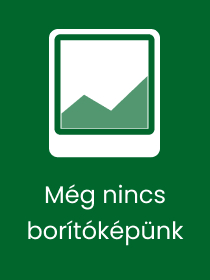
Shaping Writing Grades
Collocation and Writing Context Effects
Sorozatcím: Elements in Corpus Linguistics;
-
20% KEDVEZMÉNY?
- A kedvezmény csak az 'Értesítés a kedvenc témákról' hírlevelünk címzettjeinek rendeléseire érvényes.
- Kiadói listaár GBP 18.00
-
8 599 Ft (8 190 Ft + 5% áfa)
Az ár azért becsült, mert a rendelés pillanatában nem lehet pontosan tudni, hogy a beérkezéskor milyen lesz a forint árfolyama az adott termék eredeti devizájához képest. Ha a forint romlana, kissé többet, ha javulna, kissé kevesebbet kell majd fizetnie.
- Kedvezmény(ek) 20% (cc. 1 720 Ft off)
- Kedvezményes ár 6 880 Ft (6 552 Ft + 5% áfa)
Iratkozzon fel most és részesüljön kedvezőbb árainkból!
Feliratkozom
8 599 Ft

Beszerezhetőség
Becsült beszerzési idő: A Prosperónál jelenleg nincsen raktáron, de a kiadónál igen. Beszerzés kb. 3-5 hét..
A Prosperónál jelenleg nincsen raktáron.
Why don't you give exact delivery time?
A beszerzés időigényét az eddigi tapasztalatokra alapozva adjuk meg. Azért becsült, mert a terméket külföldről hozzuk be, így a kiadó kiszolgálásának pillanatnyi gyorsaságától is függ. A megadottnál gyorsabb és lassabb szállítás is elképzelhető, de mindent megteszünk, hogy Ön a lehető leghamarabb jusson hozzá a termékhez.
A termék adatai:
- Kiadó Cambridge University Press
- Megjelenés dátuma 2022. szeptember 8.
- ISBN 9781009074445
- Kötéstípus Puhakötés
- Terjedelem98 oldal
- Méret 228x152x6 mm
- Súly 160 g
- Nyelv angol 285
Kategóriák
Rövid leírás:
This Element explores the relationships between collocations, writing quality grades, and relevant contextual and learner variables.
TöbbHosszú leírás:
This Element explores relationships between collocations, writing quality, and learner and contextual variables in a first-year composition (FYC) programme. Comprising three studies, the Element is anchored in understanding phraseological complexity and its sub-constructs of sophistication and diversity. First, the authors look at sophistication through association measures. They tap into how these measures may tell us different types of information about collocation via a cluster analysis. Selected measures from this clustering are used in a cumulative links model to establish relationships between these measures, measures of diversity and measures of task, the language background of the writer and individual writer variation, and writing quality scores. A third qualitative study of the statistically significant predictors helps understand how writers use collocations and why they might be favoured or downgraded by raters. This Element concludes by considering the implications of this modelling for assessment.
TöbbTartalomjegyzék:
1. Introduction; 2. FYC programmes and the writing context; 3. Review of collocation-writing quality studies; 4. Methodology; 5. Study one: the cluster analysis; 6. Study two: the statistical modelling; 7. Study three: qualitative understandings of writing quality; 8. Conclusions; References.
Több

Robbins & Cotran Pathologic Basis of Disease: With STUDENT CONSULT Online Access
43 544 Ft
37 884 Ft











